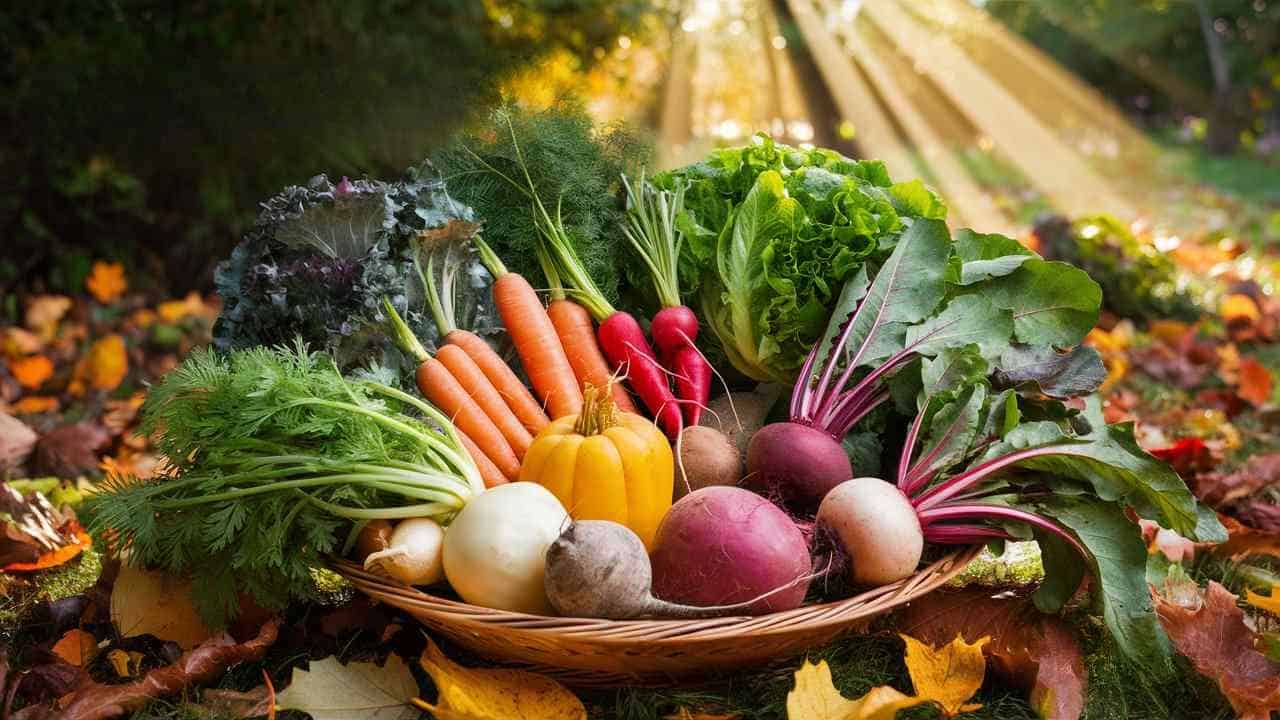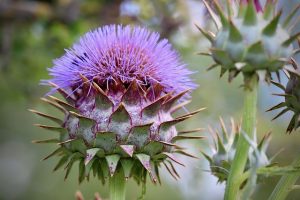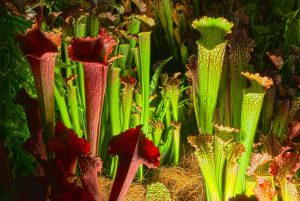As the summer heat begins to wane and the days grow shorter, it’s time to start planning your fall garden in zone 8. While many gardeners think of spring as the prime planting season, the mild temperatures and ample rainfall of autumn can actually be an ideal time to grow a variety of delicious and nutritious vegetables. In this blog post, we’ll explore three fantastic fall crops to plant in zone 8 gardens during the month of September.
Arugula
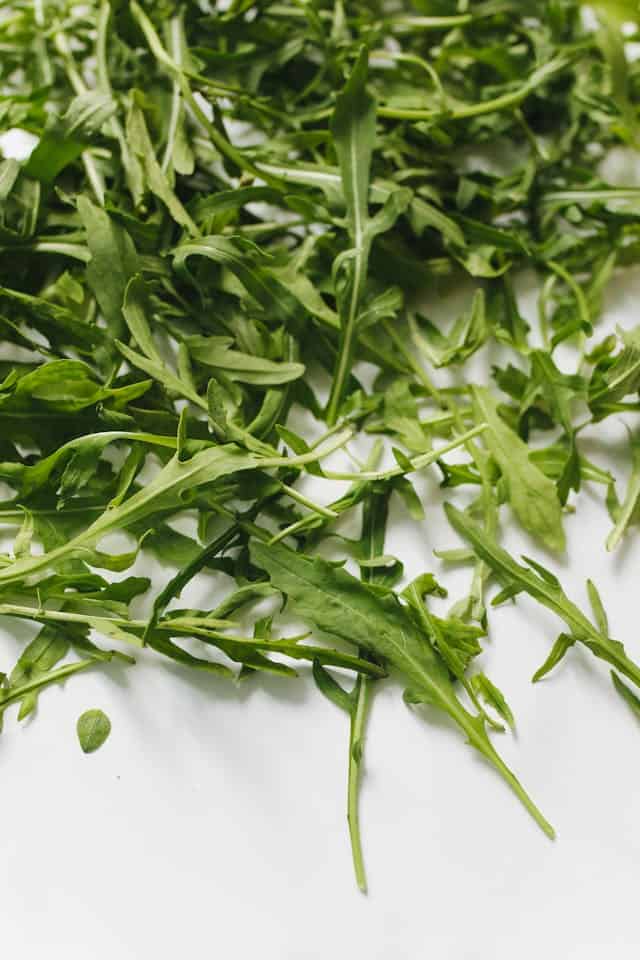
Also known as rocket or roquette, arugula is a peppery, leafy green that is perfect for the fall garden. This cool-weather loving plant can tolerate light frosts, making it a great choice for extending your growing season well into the autumn months. Arugula grows quickly, with baby leaves ready to harvest in as little as 3-4 weeks from sowing.
When planting arugula in September in zone 8, choose a spot that receives full sun to partial shade. The soil should be well-draining and rich in organic matter. Sow the seeds about 1/4 inch deep and 1 inch apart, thinning the seedlings to 4-6 inches once they sprout. Arugula does best in cooler temperatures, so be sure to provide some shade if the weather is still warm.
Harvest arugula by snipping the outer leaves, leaving the center rosette to continue producing. The leaves have the best flavor and texture when picked young and tender. Enjoy arugula in salads, on sandwiches, or lightly sautéed as a side dish.
Beets

Beets are another fantastic fall crop for zone 8 gardens. These vibrant root vegetables thrive in the mild autumn weather, developing their signature deep color and sweet, earthy flavor. Beets are packed with essential vitamins and minerals, making them a nutritional powerhouse.
For a September planting, choose a spot that receives full sun and has well-draining, nutrient-rich soil. Sow the beet seeds about 1 inch deep and 2 inches apart. Thin the seedlings to 4-6 inches once they sprout. Beets grow quickly, with roots ready to harvest in just 50-60 days.
When harvesting beets, gently loosen the soil around the roots and pull them up by the greens. The greens are also edible, so don’t discard them! Beets can be enjoyed roasted, steamed, pickled, or even raw in salads. They also make a great addition to soups and stews.
Broccoli

No fall garden in zone 8 is complete without a crop of broccoli. This cool-weather vegetable flourishes in the mild temperatures and ample moisture of autumn. Broccoli is packed with vitamins, minerals, and antioxidants, making it a nutritional powerhouse.
When planting broccoli in September, choose a spot that receives full sun and has well-draining, nutrient-rich soil. Sow the seeds about 1/2 inch deep and 12-18 inches apart. Thin the seedlings to 18-24 inches once they sprout. Broccoli takes a bit longer to mature than some other fall crops, with heads ready to harvest in 50-80 days.
To harvest broccoli, cut the central head when it’s firm and the florets are still tightly closed. Leave some of the stem attached. The plant will often produce smaller side shoots after the main head is harvested, extending your broccoli harvest.
Broccoli is delicious steamed, roasted, or added to stir-fries and casseroles. It also freezes well, so you can enjoy the bounty of your fall garden all winter long.
Brussels Sprouts
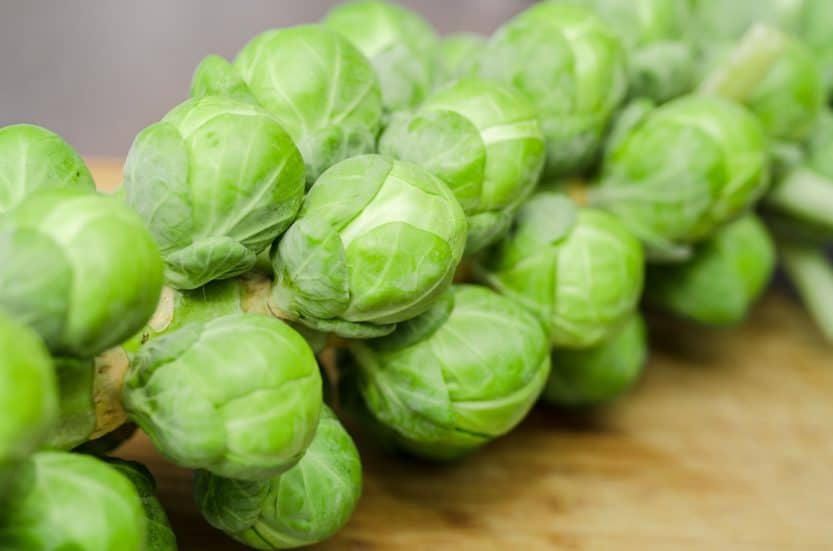
Brussels sprouts are a cool-weather loving member of the Brassica family, making them a perfect fit for the fall garden in zone 8. These miniature, cabbage-like vegetables take a bit longer to mature than some other fall crops, but the wait is well worth it. Brussels sprouts are packed with vitamins, minerals, and antioxidants, and their flavor only improves after a light frost.
When planting brussels sprouts in September, choose a spot that receives full sun and has rich, well-draining soil. Sow the seeds about 1/2 inch deep and 18-24 inches apart. Thin the seedlings to 24 inches once they sprout. Brussels sprouts take 80-100 days to reach maturity, so be patient!
Harvest the brussels sprouts by snipping them off the stalk, starting from the bottom and working your way up. The sprouts should be firm and bright green. Enjoy them roasted, sautéed, or added to soups and stews.
Cabbage
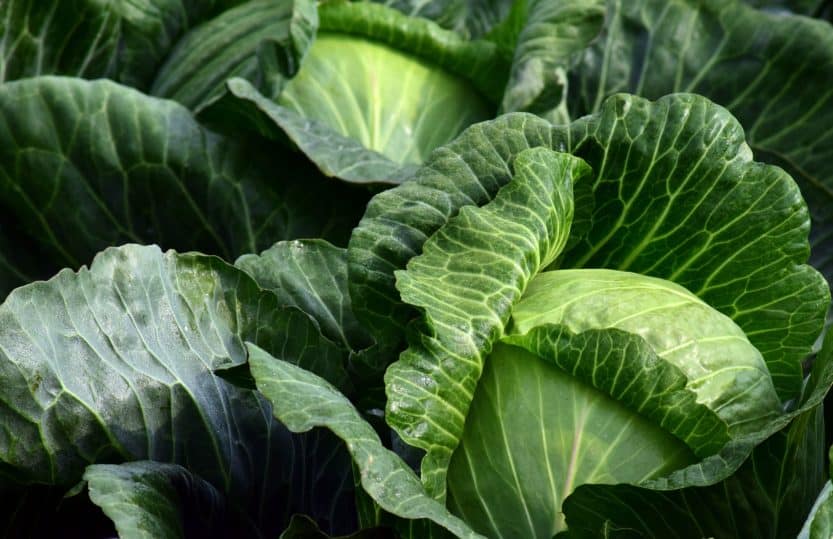
Cabbage is another cool-weather champion that thrives in the mild autumn conditions of zone 8. This versatile vegetable comes in a variety of shapes, sizes, and colors, from the classic green heads to vibrant red and Savoy varieties. Cabbage is packed with vitamins, fiber, and antioxidants, making it a nutritional powerhouse.
For a September planting, choose a spot that receives full sun and has rich, well-draining soil. Sow the seeds about 1/2 inch deep and 12-18 inches apart. Thin the seedlings to 18-24 inches once they sprout. Cabbage takes 60-100 days to reach maturity, depending on the variety.
Harvest cabbage when the heads are firm and the leaves are a deep, vibrant color. Cut the head at the base, leaving some of the outer leaves intact. Cabbage can be enjoyed raw in slaws and salads, or cooked in a variety of dishes like soups, stir-fries, and braised dishes.
Carrots
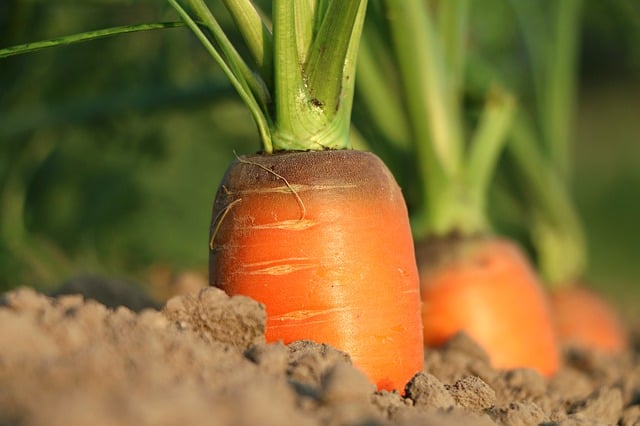
No fall garden in zone 8 is complete without a crop of carrots. These sweet, crunchy root vegetables thrive in the cool, moist conditions of autumn, developing their signature flavor and texture. Carrots are packed with vitamins, minerals, and antioxidants, making them a nutritional powerhouse.
When planting carrots in September, choose a spot that receives full sun and has loose, sandy soil that’s free of rocks and debris. Sow the seeds about 1/4 inch deep and 1 inch apart. Thin the seedlings to 2-3 inches once they sprout. Carrots take 60-80 days to reach maturity.
Harvest carrots when the shoulders begin to emerge from the soil. Gently loosen the soil around the roots and pull them up by the greens. Carrots can be enjoyed raw, roasted, or added to soups, stews, and other dishes.
Cauliflower
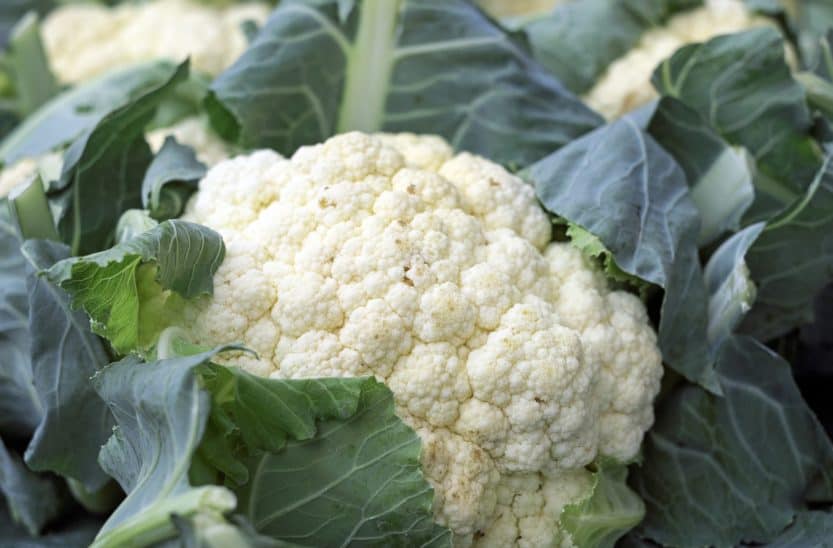
Cauliflower is a cool-weather loving member of the Brassica family, making it an excellent choice for the zone 8 fall garden. This versatile vegetable can be enjoyed raw, roasted, or incorporated into a variety of dishes. Cauliflower is packed with vitamins, minerals, and antioxidants, making it a nutritional powerhouse.
When planting cauliflower in September, choose a spot that receives full sun and has rich, well-draining soil. Sow the seeds about 1/2 inch deep and 18-24 inches apart. Thin the seedlings to 24 inches once they sprout. Cauliflower takes 60-100 days to reach maturity, depending on the variety.
Harvest cauliflower when the heads are firm and the florets are tightly packed. Cut the head at the base, leaving some of the stem attached. Cauliflower can be enjoyed raw in salads, roasted with a drizzle of olive oil and seasonings, or incorporated into soups, stews, and casseroles.
Kale
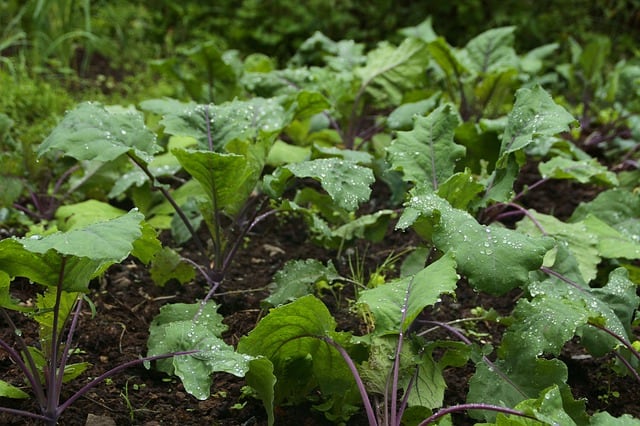
Kale is a hardy, nutrient-dense green that thrives in the cool, moist conditions of the fall garden in zone 8. This leafy vegetable comes in a variety of shapes, sizes, and colors, from the classic curly-leaf varieties to the tender, baby-leaf types. Kale is packed with vitamins, minerals, and antioxidants, making it a true superfood.
For a September planting, choose a spot that receives full sun to partial shade and has well-draining, nutrient-rich soil. Sow the seeds about 1/2 inch deep and 12-18 inches apart. Thin the seedlings to 18 inches once they sprout. Kale grows quickly, with leaves ready to harvest in just 30-60 days.
Harvest kale by snipping the outer leaves, leaving the center rosette to continue producing. Enjoy kale raw in salads, sautéed with garlic and olive oil, or added to soups and stews.
Kohlrabi
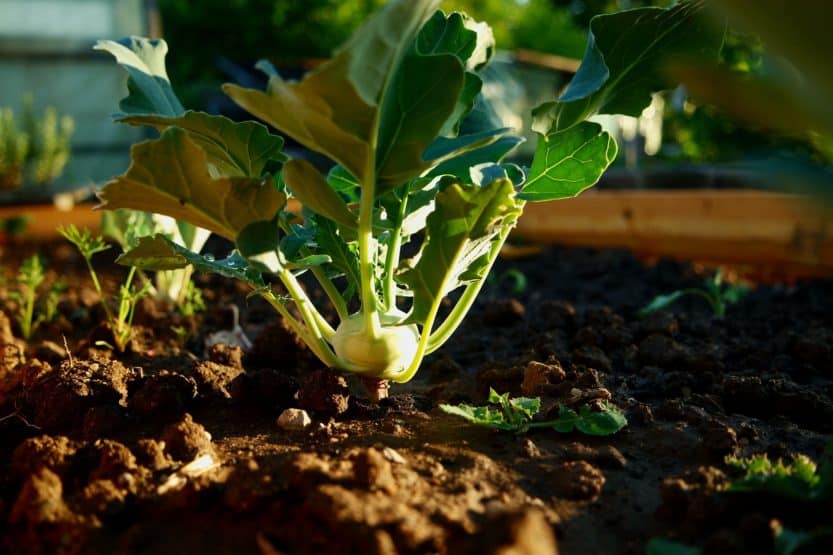
Kohlrabi is a unique, bulb-shaped member of the Brassica family that thrives in the cool, moist conditions of the fall garden in zone 8. This versatile vegetable has a mild, sweet flavor and a crisp, juicy texture that can be enjoyed raw or cooked. Kohlrabi is packed with vitamins, minerals, and fiber, making it a nutritional powerhouse.
When planting kohlrabi in September, choose a spot that receives full sun and has well-draining, nutrient-rich soil. Sow the seeds about 1/2 inch deep and 6-8 inches apart. Thin the seedlings to 8-12 inches once they sprout. Kohlrabi takes 50-70 days to reach maturity.
Harvest kohlrabi when the bulbs are 2-4 inches in diameter and firm to the touch. Peel off the tough outer skin and enjoy the crisp, juicy flesh raw in salads or slaws, or cooked in a variety of dishes.
Lettuce
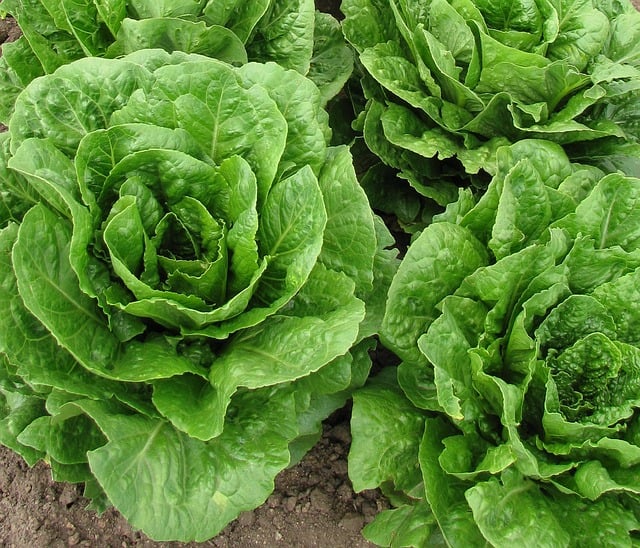
Lettuce is a cool-weather loving vegetable that thrives in the mild autumn conditions of zone 8. This leafy green comes in a wide variety of shapes, sizes, and flavors, from the crisp, crunchy romaine to the tender, buttery bibb. Lettuce is packed with vitamins, minerals, and antioxidants, making it a nutritional powerhouse.
When planting lettuce in September, choose a spot that receives full sun to partial shade and has well-draining, nutrient-rich soil. Sow the seeds about 1/4 inch deep and 12 inches apart. Thin the seedlings to 12-18 inches once they sprout. Lettuce grows quickly, with leaves ready to harvest in just 30-60 days.
Harvest lettuce by snipping the outer leaves, leaving the center rosette to continue producing. Enjoy your homegrown lettuce in fresh salads, on sandwiches, or as a flavorful addition to a variety of dishes.
Onion Sets
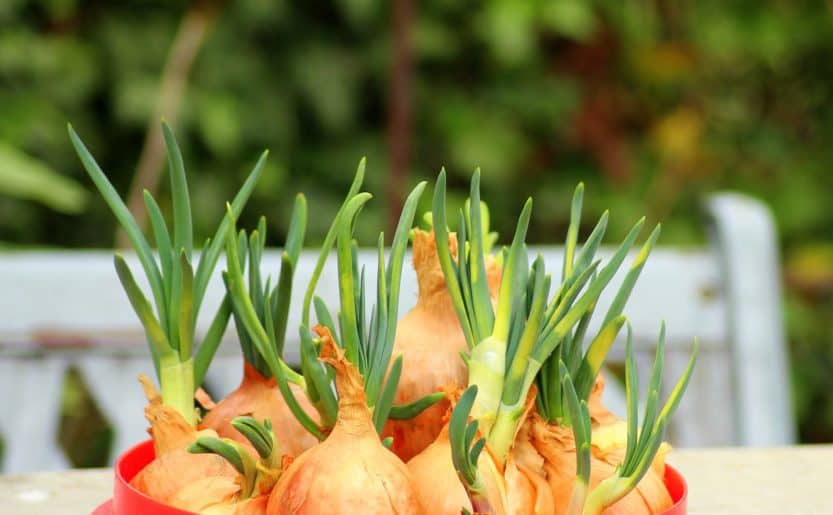
Onions are a versatile and essential ingredient in many fall and winter dishes, and they thrive in the cool, moist conditions of the zone 8 garden. Planting onion sets in September is a great way to get a head start on your onion crop, as they can be harvested in the spring or left in the ground to continue growing.
When planting onion sets in September, choose a spot that receives full sun and has well-draining, nutrient-rich soil. Gently press the sets into the soil, leaving about 2 inches of space between each one. Onion sets take 90-120 days to reach maturity, depending on the variety.
Harvest onions when the tops begin to yellow and fall over. Gently loosen the soil around the bulbs and pull them up, allowing them to cure in a dry, well-ventilated area before storing.
Peas
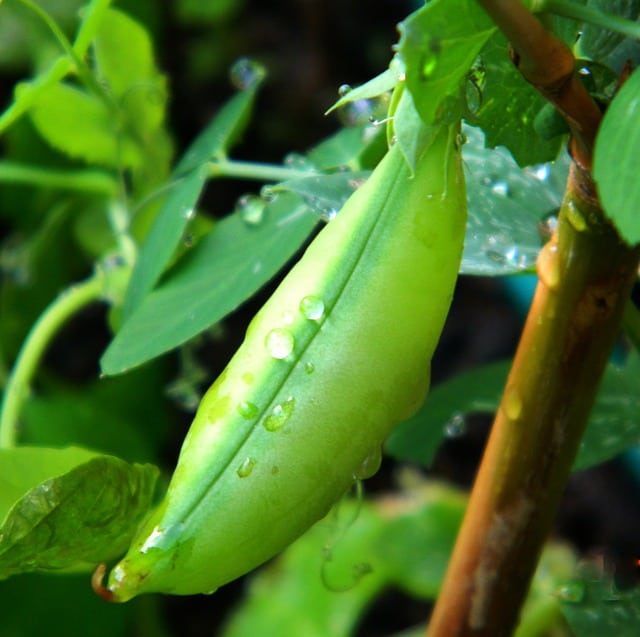
Peas are a cool-weather loving vegetable that thrive in the mild autumn conditions of zone 8. Whether you prefer the sweet, crunchy snap peas or the plump, tender shelling peas, this versatile crop is a must-have for the fall garden.
When planting peas in September, choose a spot that receives full sun and has well-draining, nutrient-rich soil. Sow the seeds about 1 inch deep and 2-3 inches apart. Provide support for the vines, such as a trellis or netting. Peas take 60-80 days to reach maturity.
Harvest peas when the pods are plump and the peas inside are tender. Enjoy them raw, steamed, or added to a variety of dishes.
Radish
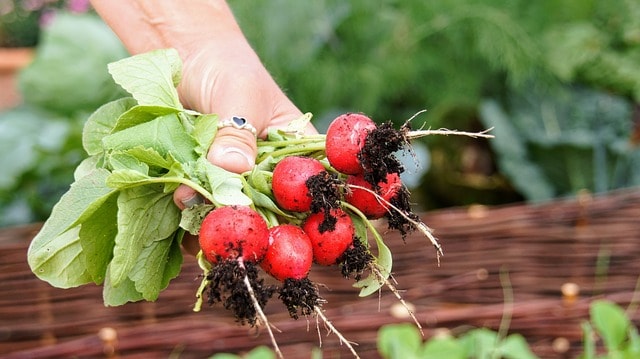
Radishes are a quick-growing, cool-weather loving vegetable that are perfect for the zone 8 fall garden. These crunchy, peppery roots come in a variety of shapes, sizes, and colors, from the classic red-and-white globes to the long, slender icicle varieties. Radishes are packed with vitamins, minerals, and antioxidants, making them a nutritional powerhouse.
When planting radishes in September, choose a spot that receives full sun and has well-draining, nutrient-rich soil. Sow the seeds about 1/2 inch deep and 1 inch apart. Thin the seedlings to 2-3 inches once they sprout. Radishes take just 20-30 days to reach maturity, making them one of the fastest-growing vegetables in the garden.
Harvest radishes when the roots are 1-2 inches in diameter and firm to the touch. Pull them up by the greens and enjoy them raw in salads, on sandwiches, or as a crunchy snack.
Spinach
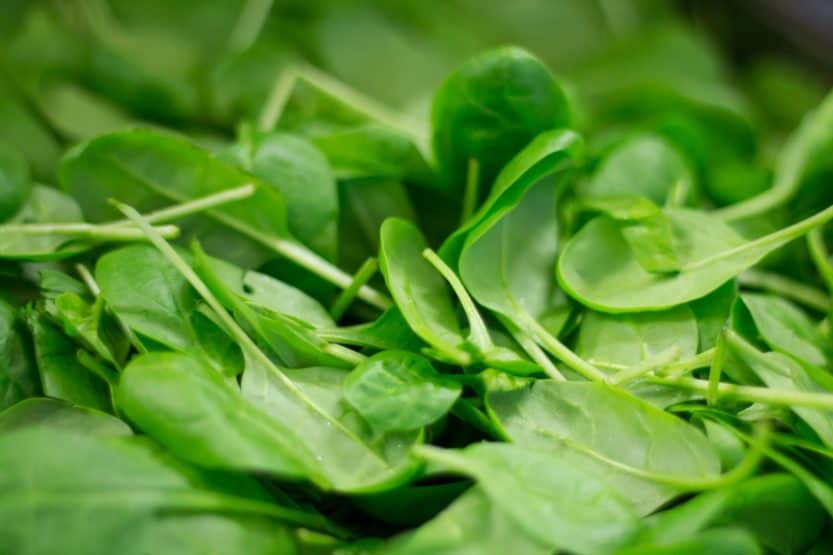
Spinach is a cool-weather loving leafy green that thrives in the mild autumn conditions of zone 8. This nutrient-dense vegetable is packed with vitamins, minerals, and antioxidants, making it a true superfood. Spinach can be enjoyed raw in salads, sautéed as a side dish, or incorporated into a variety of cooked dishes.
For a September planting, choose a spot that receives full sun to partial shade and has well-draining, nutrient-rich soil. Sow the seeds about 1/2 inch deep and 2 inches apart. Thin the seedlings to 4-6 inches once they sprout. Spinach grows quickly, with leaves ready to harvest in just 30-45 days.
Harvest spinach by snipping the outer leaves, leaving the center rosette to continue producing. Enjoy your homegrown spinach in fresh salads, sautéed with garlic and olive oil, or added to soups, stews, and casseroles.
Turnips
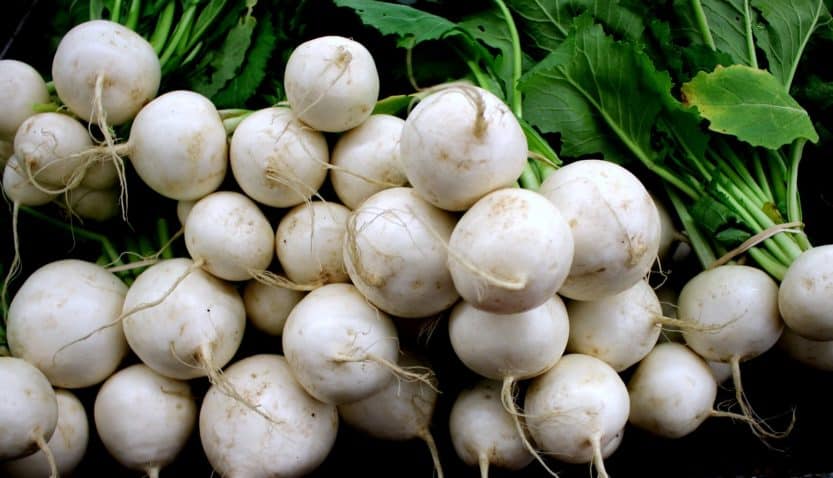
Turnips are a cool-weather loving root vegetable that thrive in the mild autumn conditions of zone 8. These crunchy, flavorful roots come in a variety of shapes, sizes, and colors, from the classic white-and-purple globes to the long, slender Tokyo varieties. Turnips are packed with vitamins, minerals, and fiber, making them a nutritional powerhouse.
When planting turnips in September, choose a spot that receives full sun and has well-draining, nutrient-rich soil. Sow the seeds about 1/2 inch deep and 2 inches apart. Thin the seedlings to 4-6 inches once they sprout. Turnips take 45-60 days to reach maturity.
Harvest turnips when the roots are 2-4 inches in diameter and firm to the touch. Pull them up by the greens and enjoy them raw in salads, roasted with a drizzle of olive oil and seasonings, or added to soups and stews.


